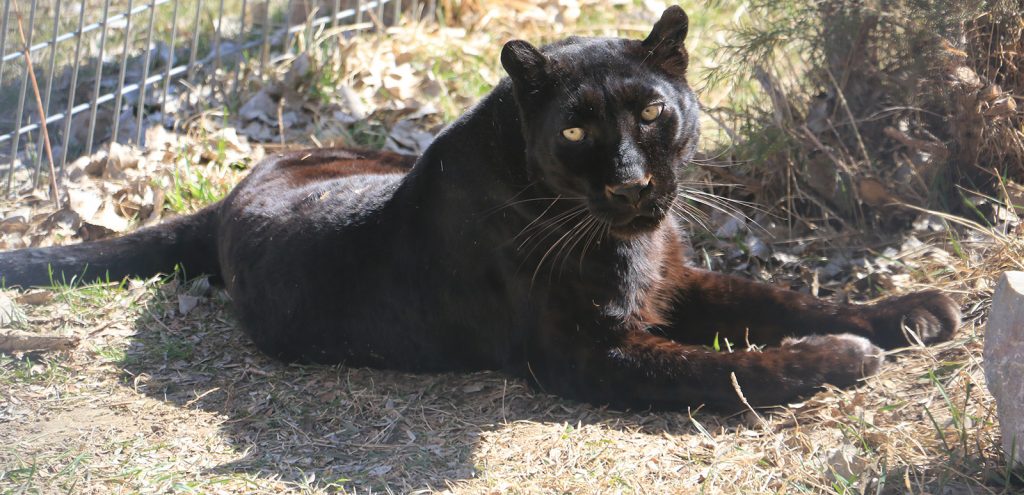
The black leopard, Panthera pardus, is not a separate species of leopard. The coloring comes from the area that is their natural habitat – the dark, dense, tropical jungle of southeast Asia. When the light is just right, you can see that Maydoc is not black.
It took me several years, but I finally have some great photos of Maydoc, a black leopard that lives at the zoo in Scottsbluff. Since she moved to a new enclosure, Maydoc has been more active, playful and it’s been easier for me to take photographs of her.
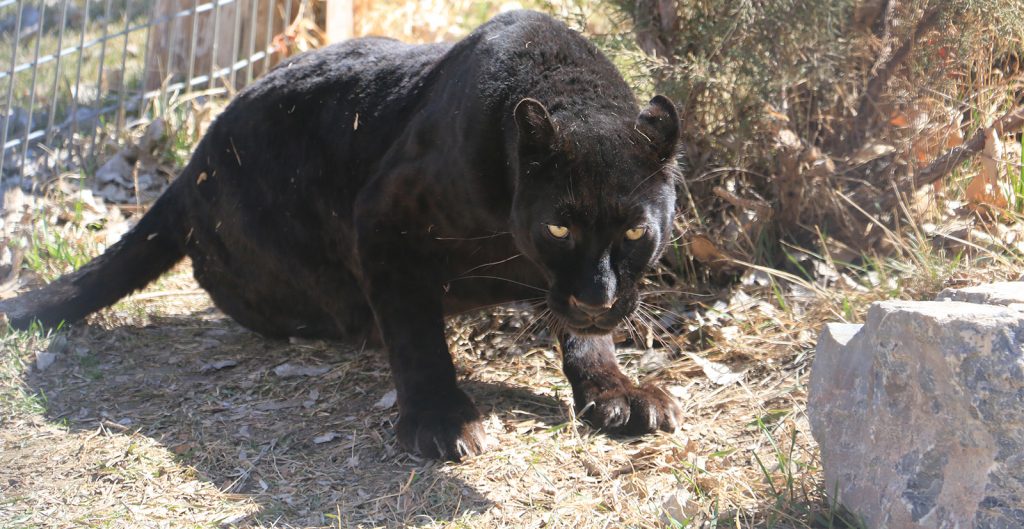
Crap. She’s seen me. In the wild, Maydoc would use her acute sense of hearing and vision for hunting she probably heard me talking after I stood still for several minutes to admire her beauty. I’m not really worried. Black leopards only occasionally hunt humans for prey.
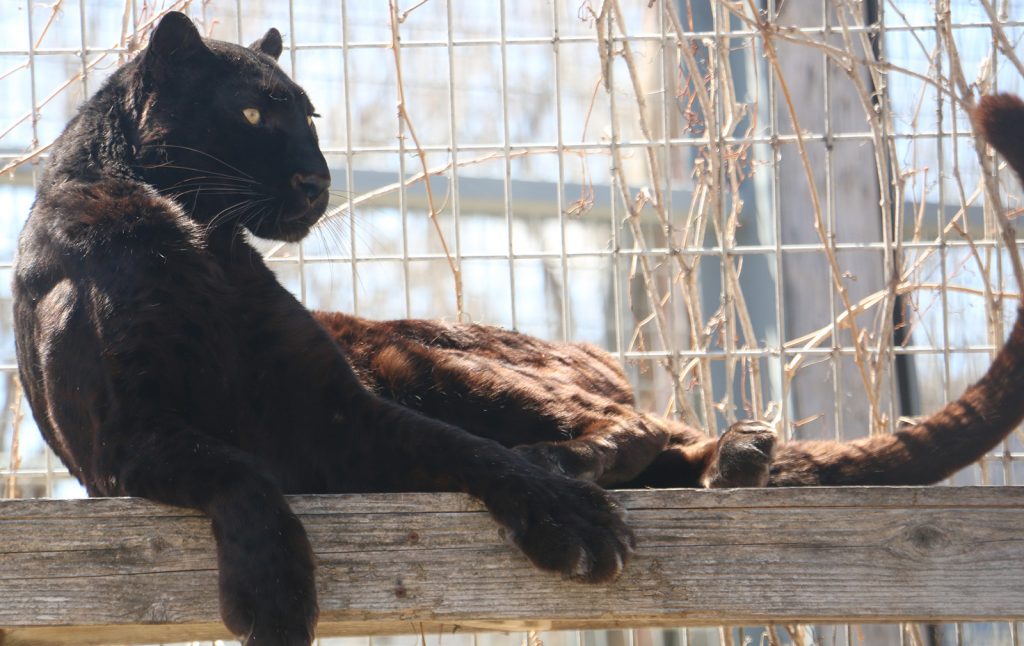
Maydoc did not eat me. She was more interested in climbing up on her perch to get a better look at all the people walking by. However, in the wild, Maydoc would likely drag her prey up into trees, where larger cats and scavengers cannot get at it. So, maybe she is contemplating how to eat me.
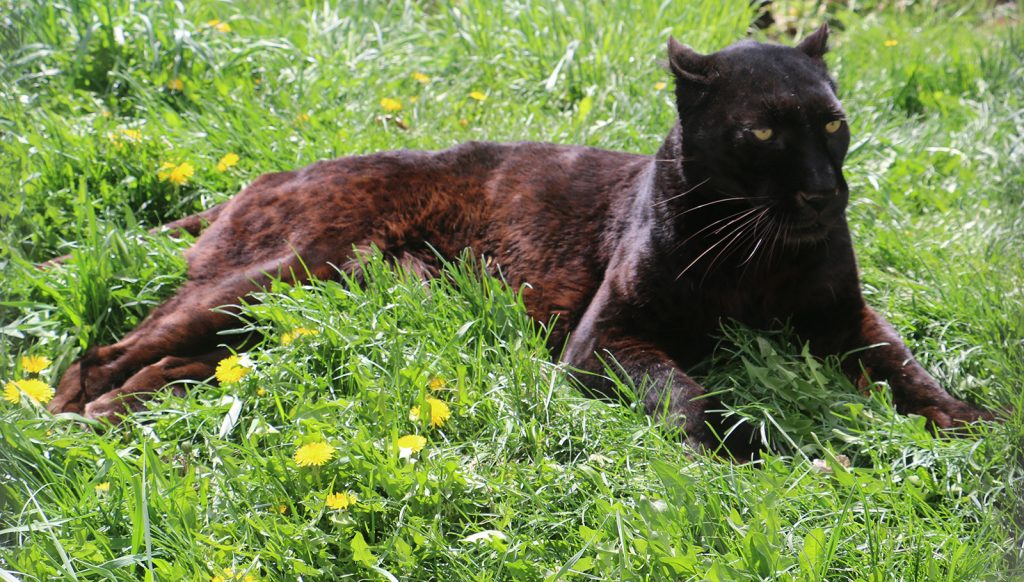
The agouti gene regulates the distribution of black pigment within the hair shaft. The color phase is from a surplus of melanin, the pigment responsible for suntans. An animal with the condition is known as melanistic.
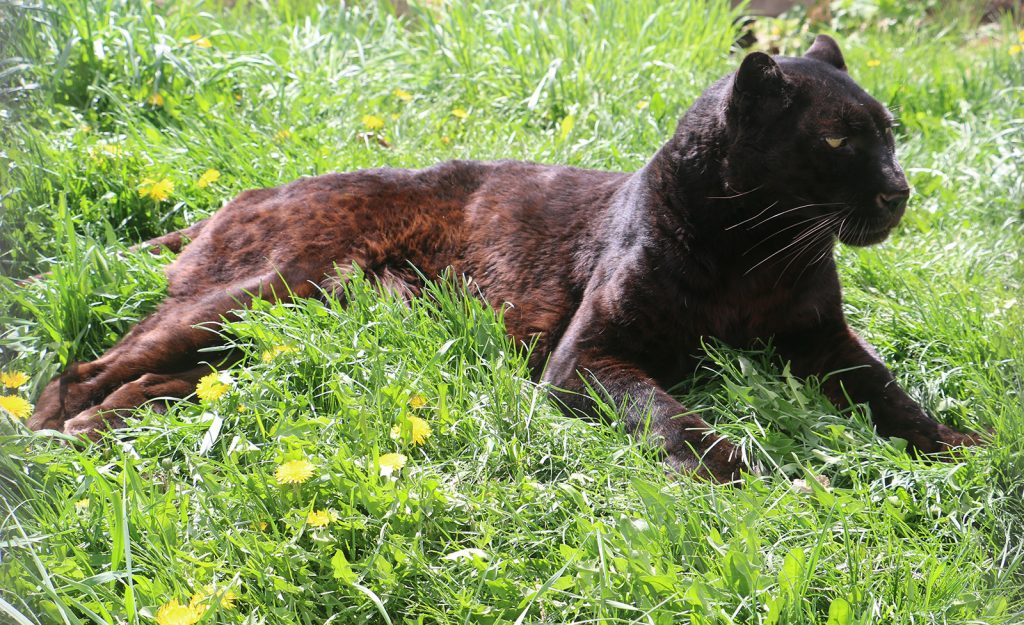
Melanistic, or all-black, individuals are the result of a single recessive gene controls dark coat color. Though they are not common, they are found more often along the Malay peninsula. According to results in the study, “Near fixation of melanism in leopards of the Malay Peninsula” by K. Kawanishi, et. al., in the 13 July 2010 issue of the Journal of Zoology, there are indications, “this recessive trait may be nearly fixed in P. pardus populations of the Malay Peninsula, suggesting a unique evolutionary
history of leopards in the region.”
According to National wildlife magazine, “In the natural world, rare genetic variations that occur in pigment genes can help animals to adapt better to their habitats. These color differences often provide a selective advantage through camouflage.”
The adaptive benefits of black fur for leopards are more difficult to interpret. Researchers Eduardo Eizirik, Stephen O’Brien and their colleagues at the National Cancer Institute’s Laboratory of Genomic Diversity in Maryland have mapped, cloned and sequenced the genes responsible for black coats in cats. “Melanism is particularly common in the cat family,” Eizirik says. “This is important because it means that dark fur, or something connected with it, has a survival benefit.” One theory is that animals living in dark, humid forests generally have darker fur for camouflage. African leopards spend most of their lives in open habitats with dappled sunlight, where spots are the best disguise. In Malaysian forests, black coats may be better camouflage than spots. “The most likely benefit of melanism is camouflage for hunting,” Eizirik says.
However, the black leopard story may prove more complicated than mere camouflage. O’Brien, chief of the Laboratory of Genomic Diversity, suggests that there are many other selective pressures besides being able to hide. “Another explanation is that about 70 percent of selective pressures associated with the biological environment involve microbes and diseases,” O’Brien says. Recent studies have shown that coat-color genes also affect the immune system. “The types of receptors used for coat colors are also used by viruses to enter cells,” O’Brien says. “It is plausible that some of these color mutations are adaptive—relics of historic epidemics.”
The spots and dark coat occur because of recessive genes, but the exact evolutionary reasons remains unclear. Don’t let that stop you from visiting Maydoc to gaze upon her shimmering beauty.

Maydoc may look like she is making a funny face, and she kind of is. After smelling a nearby bush in her enclosure at Riverside Discovery Center, she began using her vomeronasal organ, or Jacobson’s organ, to detect non-volatile chemical cues, which requires direct physical contact with the source of the odor. The sense of smell and taste are closely linked in cats. The Jacobson’s organ, is a saclike structure located in the roof of the mouth and is thought to be involved in sensing chemical messages associated with sexual activity. In this case, it is likely staff sprayed the bush with perfume or some other substance as an enrichment exercise.

Although Maydoc is beautiful and facts about her are interesting, black leopards are the result of a recessive gene that can occur during inbreeding. In the United States, this is purposely done and when they can no longer be cared for zoos will often taken them in and care for them. There is no need for anyone to every own such an animal.
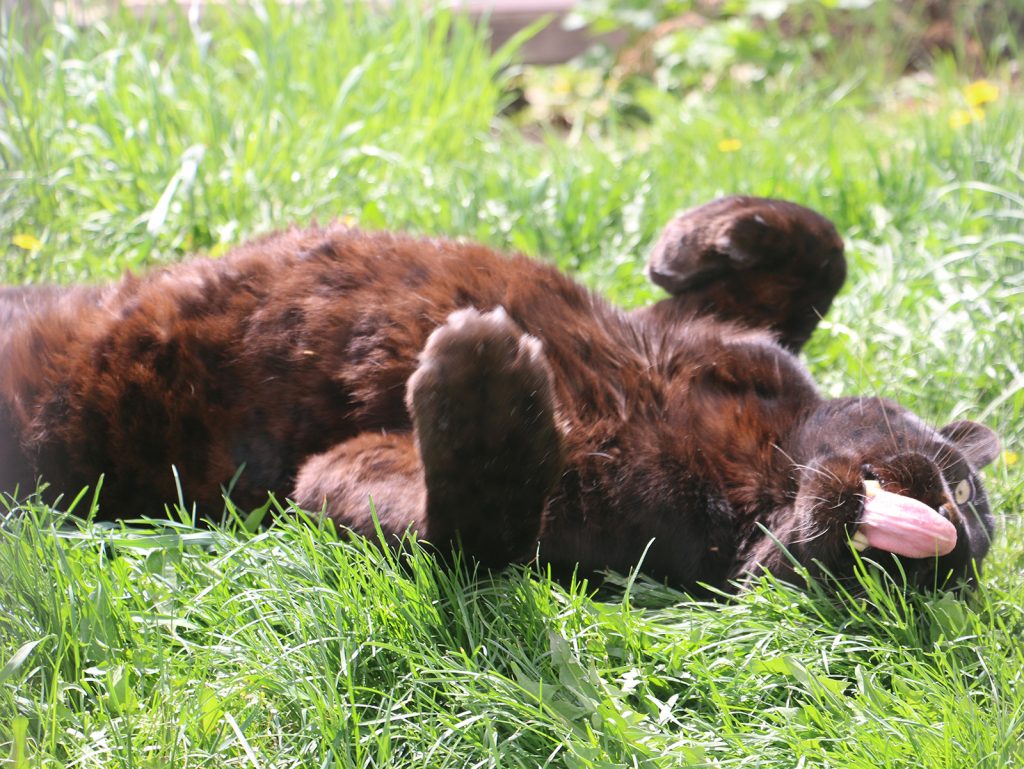
Black leopards are solitary animals, but they like to have fun just like any other animal, including rolling around in the grass and sticking their tongues out. Just remember, Maydoc can hunt and kill animals that weigh up to 1,350 pounds. That includes you. Feel free to admire her. Just make sure it’s from a distance.
Near fixation of melanism in leopards of the Malay Peninsula” by K. Kawanishi, et. al., can be found here.
